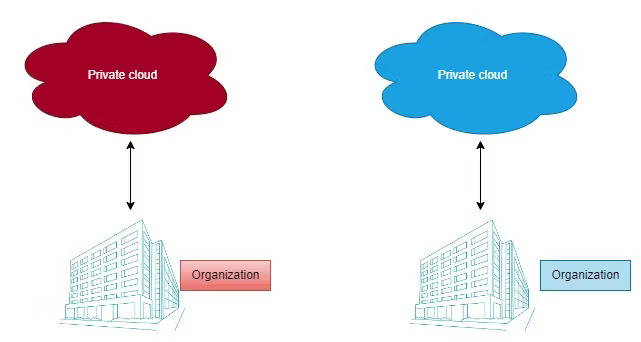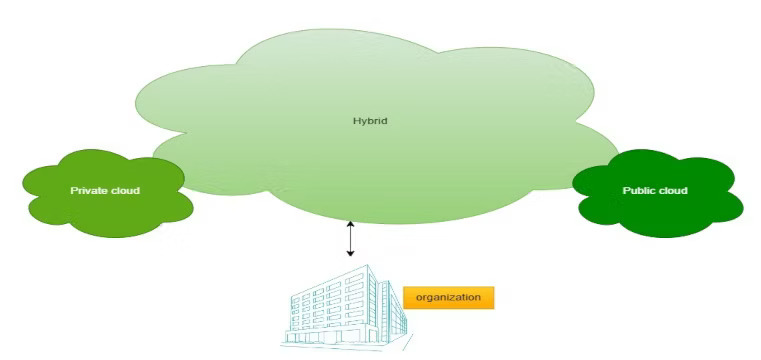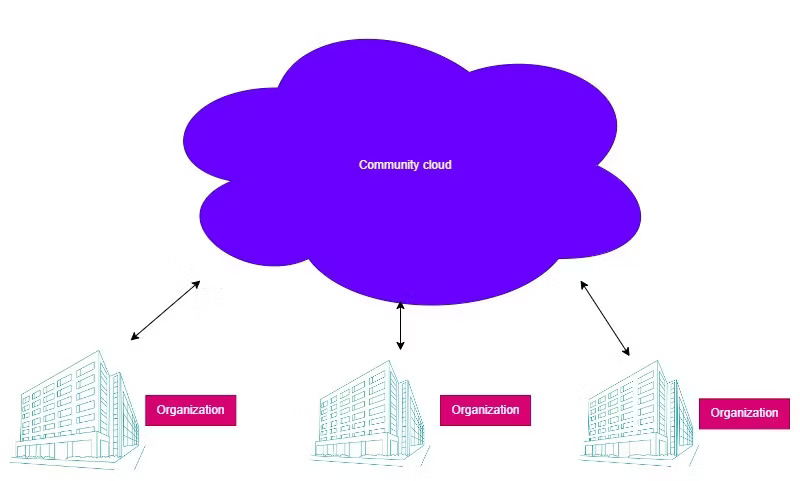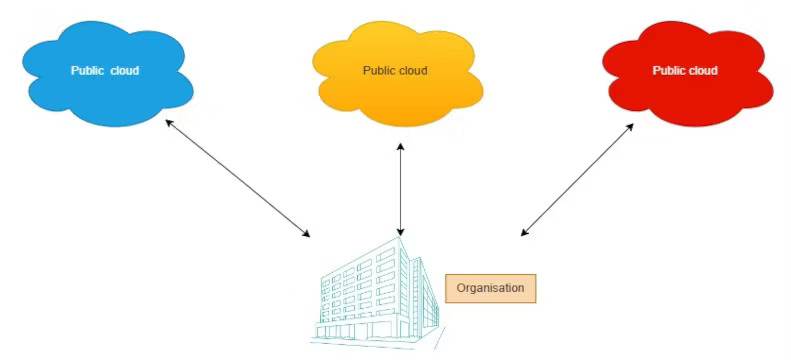Tech
Cloud Deployment Models: Exploring The Different Ways To Harness The Power Of The Cloud

(CTN NEWS) – The world of technology is rapidly evolving, and cloud computing has become an integral part of businesses across various industries.
Cloud deployment models play a crucial role in determining how organizations utilize cloud resources to achieve their goals.
In this article, we will dive deep into the different cloud deployment models and explore their unique features, advantages, and use cases. So, let’s get started!
What are Cloud Deployment Models?
The term “cloud deployment models” refers to the different ways in which cloud computing resources, such as servers, storage, and software applications, are provisioned and made available to users.
Each deployment model has its own unique characteristics, allowing organizations to tailor their cloud infrastructure to meet specific requirements. Let’s explore the various cloud deployment models in detail.
Public Cloud: The Power of Shared Resources
Public cloud deployment model is like a bustling marketplace where multiple organizations share the same cloud infrastructure provided by a third-party cloud service provider.
It offers scalability, flexibility, and cost-efficiency as the resources are shared among users. Start-ups, small businesses, and organizations with dynamic workloads often benefit from the public cloud’s pay-as-you-go model.
Private Cloud: Unleashing Enhanced Security and Control
Private cloud deployment model is like having a dedicated infrastructure reserved exclusively for a single organization. It provides enhanced security, control, and customization options.
Private clouds are ideal for organizations that prioritize data privacy, compliance, and strict governance requirements. They are commonly used in industries like finance, healthcare, and government.
Hybrid Cloud: The Best of Both Worlds
Hybrid cloud deployment model is a strategic combination of public and private clouds, creating a unified infrastructure.
It allows organizations to leverage the scalability and cost-efficiency of the public cloud while keeping sensitive data and critical workloads in a secure private cloud environment.
Hybrid cloud offers flexibility and is suitable for businesses with varying workload demands.
Community Cloud: Collaborative Cloud Solutions
Community cloud deployment model caters to a specific group of organizations with shared interests or requirements.
It enables collaboration, resource pooling, and cost-sharing among community members.
Industries such as research and development, education, and non-profit organizations often leverage community clouds to foster collaboration and achieve shared objectives.
Multi-Cloud: Expanding Horizons with Diversity
Multi-cloud deployment model involves using multiple cloud providers to meet specific business needs.
It allows organizations to diversify their cloud portfolio, avoid vendor lock-in, and take advantage of the unique offerings of different cloud platforms.
However, managing multiple clouds can be complex and requires effective integration and orchestration strategies.
Cloud Deployment Models for Scalability
Scalability is a critical factor for many organizations, as they strive to handle increasing workloads and accommodate rapid growth.
Different cloud deployment models offer various scalability options:
- Public Cloud Scalability: Public cloud providers offer virtually unlimited scalability, allowing organizations to scale resources up or down based on demand.
- Private Cloud Scalability: Private clouds offer scalability options tailored to the organization’s requirements. They can be designed with scalability in mind, ensuring that resources can be expanded as needed.
- Hybrid Cloud Scalability: Hybrid clouds enable organizations to scale workloads seamlessly between the public and private cloud environments, optimizing resource allocation and accommodating changing demands.
Cloud Deployment Models for Cost Efficiency
Cost efficiency is a significant consideration for businesses when choosing a cloud deployment model. Let’s explore the cost-saving aspects of each model:
- Public Cloud Cost Efficiency: Public clouds operate on a pay-as-you-go model, allowing organizations to pay only for the resources they use, thereby reducing upfront infrastructure costs.
- Private Cloud Cost Efficiency: While private clouds require initial investments, they can offer cost savings in the long run, especially for organizations with predictable workloads, as they eliminate recurring public cloud usage charges.
- Hybrid Cloud Cost Efficiency: Hybrid clouds enable organizations to optimize costs by utilizing the public cloud for non-sensitive workloads and the private cloud for critical or sensitive data, balancing cost and security.
Cloud Deployment Models for Data Security
Ensuring the security of data is of utmost importance for organizations. Let’s explore how different cloud deployment models address data security:
- Public Cloud Data Security: Public clouds implement robust security measures, including encryption, access controls, and regular audits, to protect customer data. However, concerns about data privacy and control may arise due to the shared infrastructure nature of the public cloud.
- Private Cloud Data Security: Private clouds provide organizations with complete control over their data and infrastructure. They allow for stronger security measures, such as dedicated firewalls, intrusion detection systems, and physical security controls.
- Hybrid Cloud Data Security: Hybrid clouds enable organizations to keep sensitive data in the private cloud while leveraging the public cloud’s security features for other workloads. This approach provides a balance between security and scalability.
Cloud Deployment Models for Compliance
Regulatory compliance is a critical consideration for organizations operating in industries with strict regulations. Different cloud deployment models offer varying levels of compliance support:
- Public Cloud Compliance: Public cloud providers adhere to industry-standard compliance certifications, such as SOC 2, ISO 27001, and GDPR, ensuring that organizations can meet their compliance requirements.
- Private Cloud Compliance: Private clouds allow organizations to have greater control over compliance by customizing security measures and ensuring compliance with specific regulations.
- Hybrid Cloud Compliance: Hybrid clouds enable organizations to segregate workloads based on compliance requirements, keeping sensitive data in the private cloud to meet stringent regulatory standards.
Choosing the Right Cloud Deployment Model
Choosing the right cloud deployment model depends on various factors, including organizational goals, workload requirements, data sensitivity, and compliance needs. To make an informed decision, consider the following:
- Identify Workload Requirements: Assess the specific needs of your workloads, including scalability, performance, security, and compliance requirements.
- Evaluate Data Sensitivity: Determine the sensitivity of your data and the level of control and security measures required to protect it adequately.
- Consider Compliance Requirements: Evaluate the industry-specific regulations and compliance standards your organization must adhere to and ensure the chosen deployment model supports them.
- Assess Cost Considerations: Analyze the cost implications of different deployment models, including upfront investments, operational expenses, and long-term scalability.
- Evaluate Cloud Service Providers: Research and compare different cloud service providers to find the one that aligns with your organization’s requirements, reputation, and service level agreements.
Conclusion
Cloud deployment models offer organizations a range of options to leverage the power of the cloud while addressing specific requirements.
Whether it’s the scalability of the public cloud, the enhanced security of the private cloud, the flexibility of the hybrid cloud, or the collaborative nature of the community cloud, organizations can choose the model that best aligns with their goals and workloads.
By considering factors such as scalability, cost efficiency, data security, and compliance, organizations can make informed decisions and harness the full potential of cloud computing.
RELATED CTN NEWS:
Kindle Cloud Reader: Access Your Favorite Books Anywhere, Anytime
Level Up Your Digital Game: Top Web Apps That Will Change The Way You Work!
5 Best Websites To Find Data Entry Jobs Online: Skills And Preferences

































